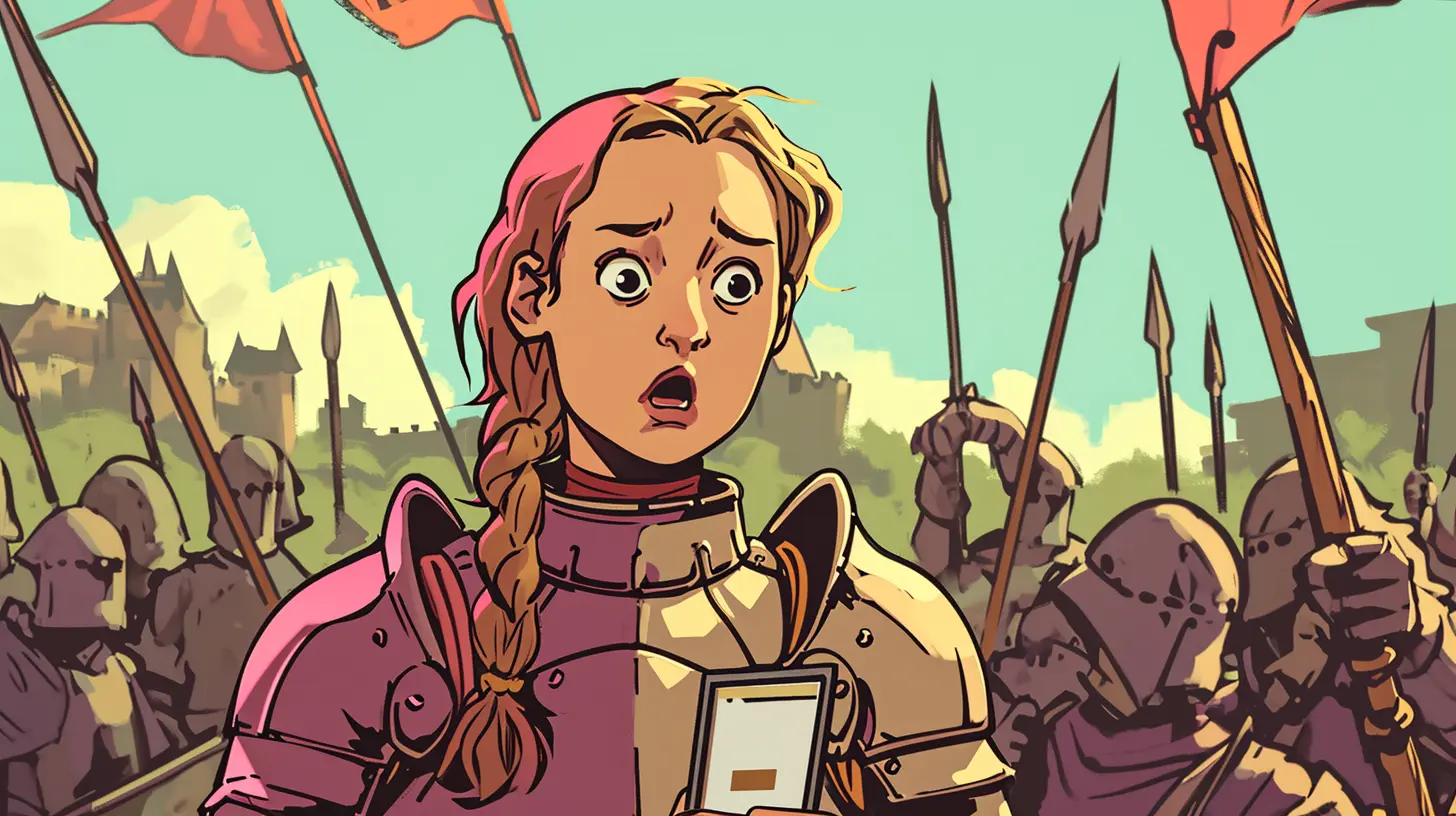#AlgorithmAndAbacus: The Prodigy Who Calculated Her Way to Fame
Imagine a young Ada Lovelace, not in the 19th century, but in today’s world. Instead of quills and parchment, little Ada, a tech whiz-kid, is already coding on her tablet, creating algorithms for her school’s robotics club. At the tender age of 12, she’s not just solving complex math problems, but also debugging her classmates’ Python scripts for fun.
Her parents, slightly bewildered by her skills, decide to replace her nanny with a Siri-like AI assistant, hoping it could keep up with her insatiable curiosity. However, within a week, Ada has reprogrammed this AI assistant to not only manage her schedule but also to compose music, proving she’s not just a math nerd but also a creative soul.
The childhood of Ada Lovelace, in this digital era, is filled with e-books on calculus, late-night coding sessions, and weekend robotics competitions. Instead of a diary, she keeps a blog titled “The Analytical Mind,” where she shares her latest projects and thoughts on the future of technology, gaining a substantial following of young aspiring programmers and seasoned tech enthusiasts alike.
As she grows older, her interests evolve from basic programming to the theoretical underpinnings of computing. Her blog posts become more complex, exploring subjects like artificial intelligence, machine learning, and the ethical implications of automation.
Her sharp mind, combined with her witty and sometimes sarcastic writing style, makes her a social media sensation. #AdaTheAlgorithmist becomes a trending hashtag, as she continues to break stereotypes and inspire a new generation of tech enthusiasts.
#CountessOfCoding: When Ada Met Babbage at TechExpo
Flash forward to Ada Lovelace in her early twenties. She’s now a rising star in the tech world, known for her sharp wit and groundbreaking blog. Her fame leads her to TechExpo, an event buzzing with the latest in tech innovations, AI breakthroughs, and startup pitches.
Here, she encounters Charles Babbage, not a 19th-century mathematician, but a modern-day tech mogul, known for his ambitious project: The Analytical Engine 2.0, a supercomputer designed to perform any kind of calculation. Babbage’s presentation, filled with technical jargon and complex diagrams, leaves the audience impressed but bewildered.
Ada, however, is captivated. She live-tweets the presentation, her posts filled with both awe and her characteristic playful skepticism.
#BabbageBoasts becomes a trending topic as she humorously questions the practical applications of such a machine.
Post-presentation, Ada approaches Babbage. Their conversation is electric, a mix of technical banter and mutual admiration. Ada’s questions and insights about the Analytical Engine 2.0 are so incisive that Babbage invites her to join his team. She agrees, but on one condition: she’ll document their progress on her blog, making their work accessible and engaging to the public. Babbage, intrigued by this unconventional proposal, agrees.
Ada’s blog posts about their collaboration become a sensation. She demystifies Babbage’s complex ideas, explaining them with clarity and a touch of humour. Her post titled “Why the Analytical Engine 2.0 is More Than Just a Fancy Calculator” goes viral, making both Ada and Babbage household names in the tech community. Together, they become an unstoppable force, with Ada’s creative vision complementing Babbage’s technical genius.
#TeamAnalyticalEngine trends worldwide as they embark on revolutionising computing.
#VictorianVirtualReality: Ada’s Algorithmic Adventures
As Ada delves deeper into the workings of the Analytical Engine 2.0, she begins to see its potential beyond mere calculations. In her blog, she starts a series called “Victorian Virtual Reality”, where she theorises about the future of computing. It’s not just about numbers and data; for Ada, it’s about creating entirely new worlds.
She imagines a future where this machine could create complex simulations, perhaps even a virtual 19th-century London. Her readers are captivated by these vivid descriptions, where horse-drawn carriages and Victorian architecture are rendered in stunning digital detail. Ada’s vision is a unique blend of her historical roots and futuristic insights.
In one of her most popular blog entries, titled “If Jane Austen Played Video Games”, Ada playfully suggests how classic literature could be experienced through interactive simulations. She even drafts a rudimentary algorithm for a game where players navigate the social labyrinths of Austen’s novels. This post not only goes viral but also sparks interest from several game developers.
Amidst this creative storm, Ada doesn’t forget the technical side. She publishes what she calls “the first algorithm designed for the Analytical Engine 2.0.” It’s a detailed, step-by-step guide for solving a complex mathematical problem, but written with such elegance and clarity that it becomes popular even outside the tech community.
Ada’s followers start to realise the true power of her work. It’s not just about the programming; it’s about envisioning a future where technology enhances human experience in ways previously unimaginable.
#AdaTheVisionary starts trending, as people from various fields express how her ideas inspire them.
#SteamPunkedSocialMedia: Ada’s Witty Critique of the Digital World
In this part of her journey, Ada Lovelace turns her analytical gaze towards the social media landscape of our time. With her unique blend of Victorian sensibilities and modern tech savvy, she offers a witty and often biting critique of the digital world we live in.
In a series of blog posts titled “From Telegrams to Twitter”, Ada compares the communication methods of her era with today’s social media platforms. She humorously points out that while a telegram in her day took hours to deliver a single message, today we’re inundated with messages every second, yet struggle to communicate effectively.
Ada doesn’t shy away from the absurdities of online life. She writes a satirical piece on Instagram, imagining how famous historical figures would use the platform.
In “Napoleon’s Selfie Guide” and “Queen Victoria’s #ThrowbackThursday”, she playfully mocks the self-obsession and nostalgia pervasive in social media culture.
But Ada’s critique isn’t just for laughs. She raises serious questions about privacy, data security, and the ethical implications of AI. In a particularly impactful post, “The Ghost in the Machine: AI Ethics in the 21st Century”, she draws parallels between the industrial revolutions of her time and the digital revolution of ours, cautioning against unchecked technological progress.
Her followers appreciate this blend of humour and insight. Tech enthusiasts, history buffs, and social media users alike engage in lively debates in the comment sections of her blog.
#AdaComments becomes a popular hashtag where people share their favourite witty remarks from her posts.
Ada’s perspective as a 19th-century countess navigating the 21st-century digital landscape offers a refreshing take on our modern world. Her blog becomes a space where history and technology, humour and seriousness, converge in delightful and thought-provoking ways.
#LegacyInALoop: Coding into the Future with Ada’s Vision
As the night sets on our digital odyssey with Ada Lovelace, we circle back to the essence of her legacy in a world driven by technology and interconnected by social media, and reflect on how her pioneering spirit transcends time, influencing and inspiring the digital realm of today.
Visualise a world where Ada’s contributions are celebrated universally, not just within the confines of historical texts, but in the very fabric of our digital lives. Social media explodes with tributes during #AdaLovelaceDay, with viral LinkedIn stories featuring women who’ve broken barriers in tech, inspired by Ada’s journey.
Tech conferences stream keynote speeches about Ada’s theoretical works, hypothesising their applications in modern computing. YouTube channels dedicated to coding and tech history regularly feature episodes titled “Coding with Countess”, where Ada’s algorithms are dissected and discussed in depth, bringing a 19th-century genius into 21st-century dialogues.
In a playful twist, imagine Ada’s own social media presence. She humorously critiques modern tech trends on Twitter, her tweets interspersed with dry wit and astute observations.
On Instagram, she shares snapshots of her ‘modern’ life, juxtaposing Victorian aesthetics with contemporary tech gadgets, under the hashtag #CountessInTheCloud.
The blog post shifts to a more reflective tone, pondering what innovations Ada might spearhead if she were part of today’s tech landscape. Readers engage enthusiastically, sharing imaginative ideas ranging from Ada developing sustainable AI solutions to her leading the charge in ethical tech practices.
Finally, the post culminates with a powerful call to action, urging readers to not just celebrate Ada’s legacy, but to actively contribute to the ongoing narrative of women in technology. It’s an invitation to honour Ada not just in hashtags and retrospectives, but in our daily actions and aspirations, in coding classes, and in tech start-ups, keeping her spirit alive and evolving.
#LegacyInALoop becomes a symbol of the continuous cycle of inspiration, innovation, and influence, a testament to Ada Lovelace’s enduring impact in the ever-changing world of technology.
As we log off from Ada’s digital saga, we’re left to ponder: how would other historical figures fare in the world of social media? Their stories, like Ada’s, are ripe for a modern retelling, where History Meets Hashtag.





Leave a comment